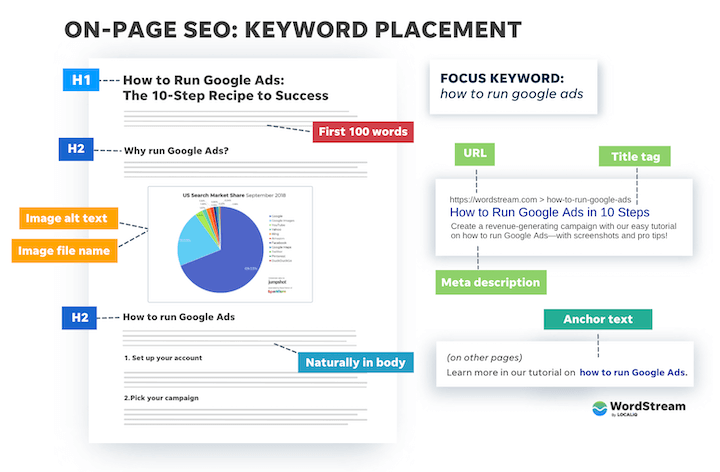Uncover the secrets to optimizing your SEO strategy with our in-depth guide on managing misspellings and maximizing search visibility.

Image courtesy of via DALL-E 3
Table of Contents
- Introduction: Understanding Misspellings in SEO
- Identifying Common Misspellings
- Typo-Friendly Keywords
- Google Suggest and Misspellings
- Correcting Misspellings in Your Content
- Misspellings in Meta Tags and Descriptions
- Monitoring and Updating Misspellings
- Conclusion: The Role of Misspellings in SEO Success
- Frequently Asked Questions (FAQs)
Introduction: Understanding Misspellings in SEO
Misspellings are mistakes people make when they write words incorrectly. In the world of SEO (Search Engine Optimization), these errors can have a big impact on how well a website shows up in search results. Understanding misspellings is essential for anyone looking to improve their website’s visibility online.
What are Misspellings?
Misspellings are when words are typed wrongly. For example, writing “dog” as “dgo” or “cat” as “ctat” are common misspellings. These mistakes can happen easily when typing quickly or not paying attention.
Why Misspellings Matter in SEO
When people search for something online, they often make mistakes in spelling. If your website doesn’t include these misspelled words, it might not show up in their search results. This could mean less traffic to your site and fewer people seeing what you have to offer.
Identifying Common Misspellings
One way to uncover common misspellings is by using special tools designed to catch these errors. These tools can help you identify words that are frequently misspelled in search queries. By recognizing these mistakes, you can adjust your SEO strategy to target a wider range of keywords that users might be typing in.
Analyzing Search Data
Another method to identify common misspellings is by analyzing search data. By examining the search terms that users are inputting, you may start noticing patterns in the way certain words are spelled incorrectly. This data can provide valuable insights into which misspelled keywords to focus on in order to attract more traffic to your website.
Typo-Friendly Keywords
Typo-friendly keywords are words or phrases that are commonly misspelled by users in search queries. These typos can present an excellent opportunity for your website to attract more traffic. To find typo-friendly keywords, you can start by brainstorming common misspellings of your target keywords. Think about how someone might accidentally mistype a word and search for that instead. You can also use online tools that analyze search data to identify frequently misspelled words related to your industry or niche.

Image courtesy of via Google Images
Including Typos in Content
Once you have identified typo-friendly keywords that are relevant to your content, the next step is to strategically incorporate them into your website copy. It’s important to do this in a way that feels natural and doesn’t detract from the quality of your content. One approach is to create a separate section or page on your website dedicated to commonly misspelled terms. This can not only help you attract more organic traffic but also demonstrate to your audience that you understand their needs and are willing to go the extra mile to provide value.
Google Suggest and Misspellings
Google Suggest is a nifty feature by Google that helps users refine their search queries by suggesting popular search terms as they type. Have you ever noticed how Google finishes your sentences for you when you start typing in the search bar? That’s Google Suggest in action!
Leveraging Google Suggest for SEO
For website owners and content creators, Google Suggest can be a goldmine for discovering commonly misspelled words. By paying attention to the suggestions that pop up when you type in your main keywords, you can uncover potential misspellings that users frequently make. This insight allows you to optimize your content by including these misspelled keywords strategically.
Correcting Misspellings in Your Content
In the world of content creation, ensuring that your writing is error-free is crucial. Misspellings not only detract from the professionalism of your content but can also impact your SEO efforts. Here are some strategies for correcting misspellings in your content:

Image courtesy of via Google Images
Using Spell Check Tools
One of the easiest and most effective ways to catch misspellings in your content is to use spell check tools. These tools can quickly scan your writing for errors and highlight any misspelled words. Incorporating a spell check tool into your writing process can help you catch mistakes before publishing your content.
Editing and Proofreading
While spell check tools are handy, they may not catch every error. That’s why it’s essential to manually edit and proofread your content. By reading through your writing carefully, you can catch any misspellings that may have slipped through the cracks. Taking the time to thoroughly review your content can help ensure its accuracy.
Misspellings in Meta Tags and Descriptions
Meta tags are essential for telling search engines what your website is about. To ensure your meta tags are free from misspellings, it’s crucial to double-check your spelling and grammar. Avoid common mistakes like typing too fast or relying solely on autocorrect tools.
When crafting meta tags, consider using tools like Grammarly or Hemingway Editor to catch any errors. These tools can help you maintain clean and error-free meta tags that accurately reflect your content.
Crafting Accurate Descriptions
Meta descriptions are your chance to entice users to click on your website in search results. To avoid misspellings in descriptions, take the time to carefully proofread your text before publishing it.
Make sure your meta descriptions are concise, relevant, and free from spelling errors. Remember that users are more likely to click on search results that appear professional and well-written, so investing time in crafting accurate descriptions can pay off in the long run.
Monitoring and Updating Misspellings
It’s essential to frequently check your content for any misspellings that could negatively impact your SEO. By conducting regular content audits, you can catch and correct any mistakes before they harm your website’s visibility. Look through your website pages, blog posts, and product descriptions to ensure that all the text is error-free. Make it a habit to review and update your content periodically to maintain its quality.

Image courtesy of via Google Images
Using Analytics Tools
Analytics tools play a crucial role in monitoring misspelled keywords and improving your SEO strategy. By analyzing the search terms used by visitors to your website, you can identify common misspellings and adjust your content accordingly. Tools like Google Analytics provide valuable insights into the keywords that users are searching for, allowing you to optimize your content for better visibility. Keep track of the performance of your keywords and regularly update your content to reflect any changes in search trends.
Conclusion: The Role of Misspellings in SEO Success
In the world of SEO, every detail matters, including misspellings. By understanding the significance of handling misspellings effectively, you can boost your website’s visibility and improve search engine rankings. Let’s recap some key points covered in this article and emphasize the importance of managing misspellings in SEO.
Key Takeaways
Firstly, misspellings are common errors that users make when searching for information online. These mistakes can impact how your website appears in search results, affecting your online presence. Identifying common misspellings and incorporating typo-friendly keywords into your content can help drive more traffic to your site.
Utilizing tools to spot misspellings, analyzing search data, and leveraging Google Suggest are effective strategies for identifying and optimizing misspelled keywords. Correcting misspellings in your content, meta tags, and descriptions is essential for maintaining accuracy and credibility.
Regularly monitoring and updating your content for misspellings is crucial for improving SEO performance. By conducting regular content audits and utilizing analytics tools, you can stay ahead of the game and ensure that your website remains optimized for search engines.
Future Considerations
As SEO trends evolve, it’s important to stay updated and continuously refine your approach to managing misspellings. By staying informed and adapting to changes in search algorithms, you can maintain a competitive edge and drive more traffic to your website.
Remember, the devil is in the details when it comes to SEO success. Paying attention to misspellings may seem like a small task, but it can make a big difference in how your website performs in search engine results. By following the best practices outlined in this article, you can enhance your website’s visibility and ultimately achieve greater success in the digital landscape.
Want to turn these SEO insights into real results? Seorocket is an all-in-one AI SEO solution that uses the power of AI to analyze your competition and craft high-ranking content.
Seorocket offers a suite of powerful tools, including a Keyword Researcher to find the most profitable keywords, an AI Writer to generate unique and Google-friendly content, and an Automatic Publisher to schedule and publish your content directly to your website. Plus, you’ll get real-time performance tracking so you can see exactly what’s working and make adjustments as needed.
Stop just reading about SEO – take action with Seorocket and skyrocket your search rankings today. Sign up for a free trial and see the difference Seorocket can make for your website!
Frequently Asked Questions (FAQs)
Why are misspellings important in SEO?
Misspellings are crucial in SEO because they can significantly impact your website’s visibility and search engine rankings. When users make typos or misspell words while searching, search engines still need to deliver relevant results. By optimizing your content for common misspellings, you can capture a broader audience and improve your chances of appearing in search results.
How do I find common misspellings?
Finding common misspellings can be done through various tools and techniques. One effective method is to use tools specifically designed to spot misspelled words in search queries. Additionally, analyzing search data can help identify patterns in the way users commonly misspell keywords. By understanding these common mistakes, you can tailor your content to include these variations and attract more traffic to your site.
Should I intentionally include typos in my content?
Intentionally including typos in your content can be a double-edged sword. On one hand, incorporating commonly misspelled keywords can attract users who make similar mistakes when searching. This strategy can enhance your website’s visibility and drive more traffic. However, it is essential to strike a balance between including typos for SEO purposes and maintaining the quality and credibility of your content. Overdoing it may lead to a negative user experience and potentially harm your brand reputation.







